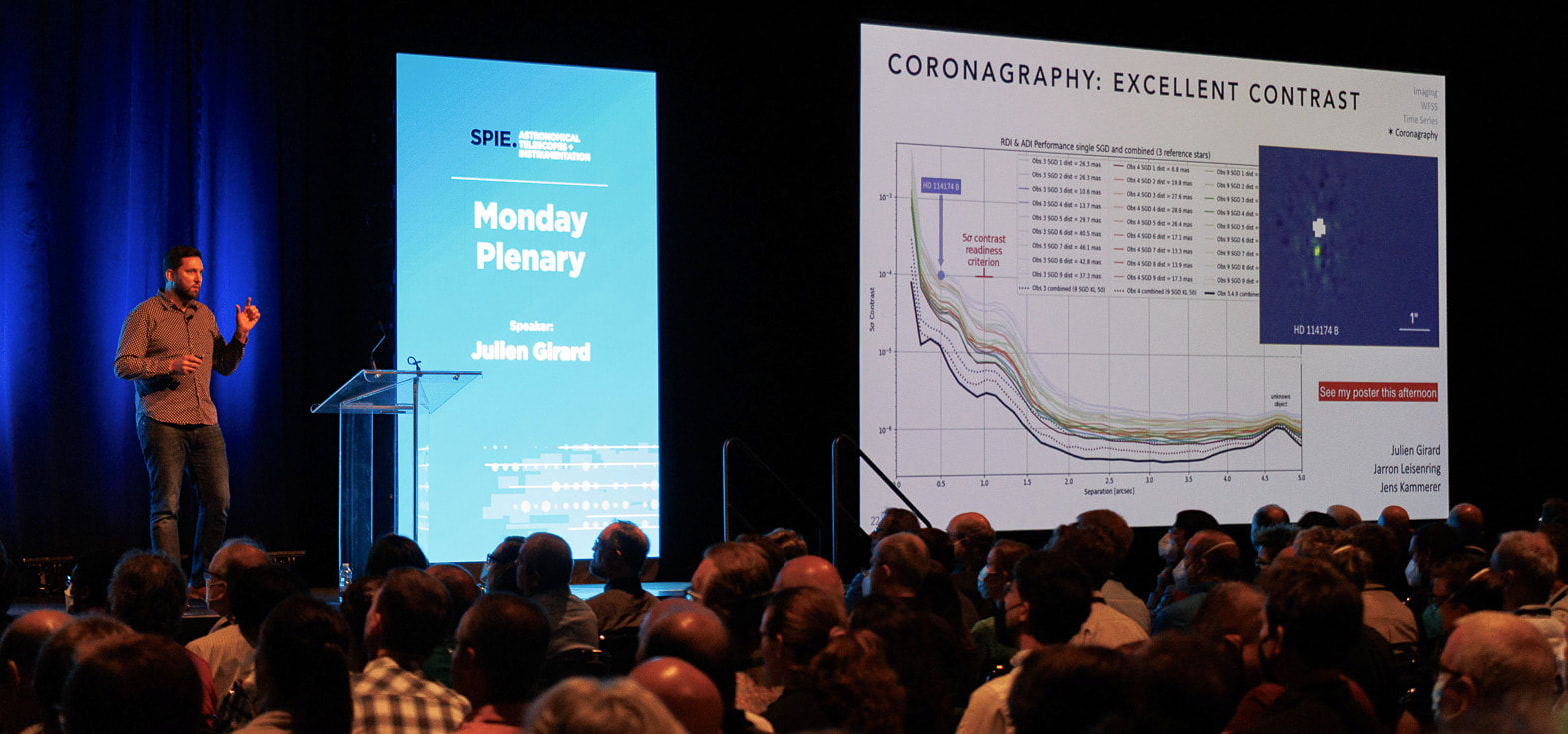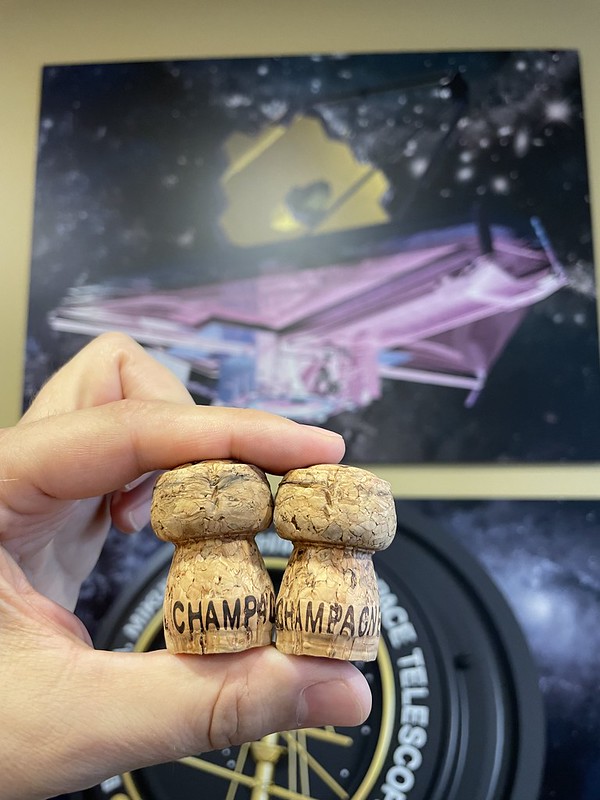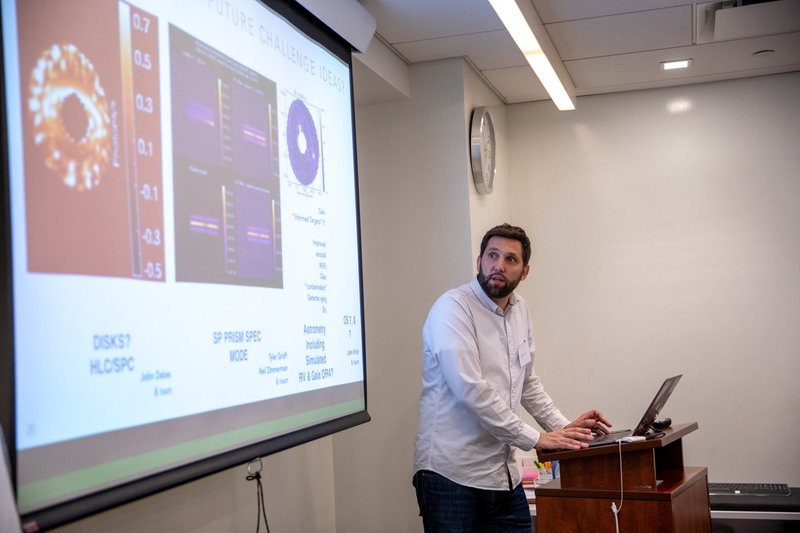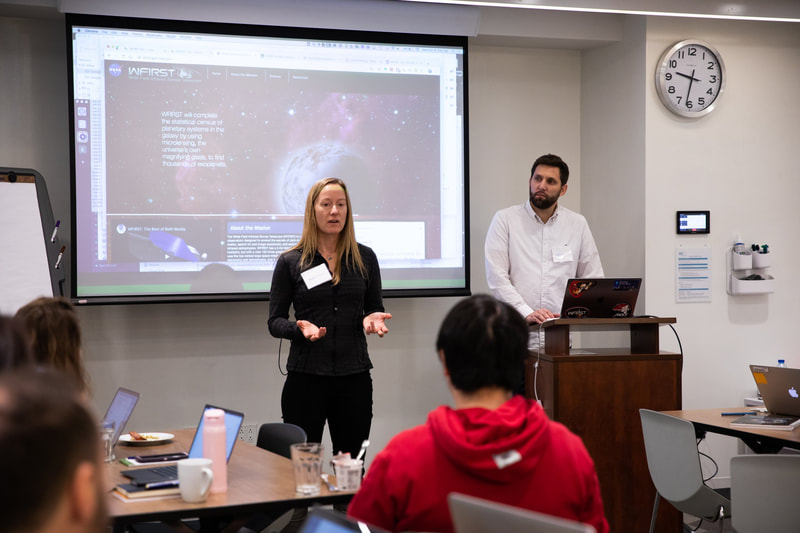0 Comments
The NIRCam Coronagraphy mode was the last, the 17th JWST mode to be declared ready for science. That happened on July 10th, Sunday, 1 day before @POTUS showed the deep field "SMAC" image. I can tell you it was crazy for me as we got the data only 4 days before and had... pressure!
This is so cool, mind blowing 🤯: Exoplanet science is maturing with disruptive novel instruments like GRAVITY and the great ExoGRAVITY effort and generous collaboration led by Sylvestre Lacour. Urbain Le Verrier predicted the existence of Neptune using mathematics. Here, we achieved the mass measurement of an exoplanet, β Pictoris c from the motion of its bigger "sister" β Pictoris b! Optical/NIR interferometry is saved and has now a long future at ESO and beyond, on the ground and in space! I am so happy to be an insignificant part of this. In 2001 I tested integrated optics components as part of my master's internship between IPAG (then LAOG) and CEA/LETI. Then, there were H-band optimized 3-beam recombiners aimed at the IOTA interferometer in Arizona. The ~same technology is used in GRAVITY to recombine 4 telescope beams by pairs. The mass of Beta Pictoris c from Beta Pictoris b orbital motion.
S. Lacour, J. J. Wang, L. Rodet, M. Nowak, J. Shangguan, H. Beust, A.-M. Lagrange, R. Abuter, A. Amorim, R. Asensio-Torres, M. Benisty, J.-P. Berger, S. Blunt, A. Boccaletti, A. Bohn, M.-L. Bolzer, M. Bonnefoy, H. Bonnet, G. Bourdarot, W. Brandner, F. Cantalloube, P. Caselli, B. Charnay, G. Chauvin, E. Choquet, V. Christiaens, Y. Clénet, V. Coudé du Foresto, A. Cridland, R. Dembet, J. Dexter, P. T. de Zeeuw, A. Drescher, G. Duvert, A. Eckart, F. Eisenhauer, F. Gao, P. Garcia, R. Garcia Lopez, E. Gendron, R. Genzel, S. Gillessen, J. H. Girard, X. Haubois, G. Heißel, Th. Henning, S. Hinkley, S. Hippler, M. Horrobin, M. Houllé, Z. Hubert, L. Jocou, J. Kammerer, M. Keppler, P. Kervella, L. Kreidberg, V. Lapeyrère, J.-B. Le Bouquin, P. Léna, D. Lutz, A.-L. Maire, et al. (38 additional authors not shown) http://arxiv.org/abs/2109.10671 We aim to demonstrate that the presence and mass of an Exoplanet can now be effectively derived from the astrometry of another Exoplanet. We combined previous astrometry of ββ Pictoris b with a new set of observations from the GRAVITY interferometer. The orbital motion of ββ Pictoris b is fit using Markov chain Monte Carlo simulations in Jacobi coordinates. The inner planet, ββ Pictoris c, was also reobserved at a separation of 96\,mas, confirming the previous orbital estimations. From the astrometry of planet b only, we can (i) detect the presence of ββ Pictoris c and (ii) constrain its mass to 10.04+4.53−3.10MJup10.04−3.10+4.53MJup. If one adds the astrometry of ββ Pictoris c, the mass is narrowed down to 9.15+1.08−1.06MJup9.15−1.06+1.08MJup. The inclusion of radial velocity measurements does not affect the orbital parameters significantly, but it does slightly decrease the mass estimate to 8.89+0.75−0.75MJup8.89−0.75+0.75MJup. With a semimajor axis of 2.68±0.022.68±0.02\,au, a period of 1221±151221±15 days, and an eccentricity of 0.32±0.020.32±0.02, the orbital parameters of ββ Pictoris c are now constrained as precisely as those of ββ Pictoris b. The orbital configuration is compatible with a high-order mean-motion resonance (7:1). The impact of the resonance on the planets' dynamics would then be negligible with respect to the secular perturbations, which might have played an important role in the eccentricity excitation of the outer planet. Since about 2 years I am coordinating this community engagement effort with an amazing team. Please check out the dedicated Data Challenge website (which I created and maintain). The Nancy Grace Roman Space Telescope (Roman, formally WFIRST) Exoplanet Imaging Data Challenge and Tutorial Suite are for exoplanet scientists who are interested in learning the art and science of high contrast imaging of exoplanetary systems. Roman's Coronagraph Instrument (formally CGI), with a possible Starshade rendezvous, is the only exoplanet imaging instrument planned for flight in the next decade. The Data Challenge material was an excellent way to become familiar with the intricacies of the first spaceborne high contrast exoplanet imaging mission, as a pathfinder to future flagship missions. The CHALLENGE is now OVER but please, see our Timeline, play with the Data, check our Tutorial, Events and "Final Jamboree" videos with the winners/prizes! On April 30th, we had organized a 3 ½ hour "Final Jamboree" event, we presented the challenge, its organization, summarized how the data were simulated and showed our in-house analysis for planet c.
We explained which metrics were applied to the participants' entries to rank them. Finally, we announced the winners/prizes and discussed the lessons learned, the the legacy tutorial as well as heard the 3 finalist teams give their feedback! |
Categories
All
Archives
July 2022
|




 RSS Feed
RSS Feed
